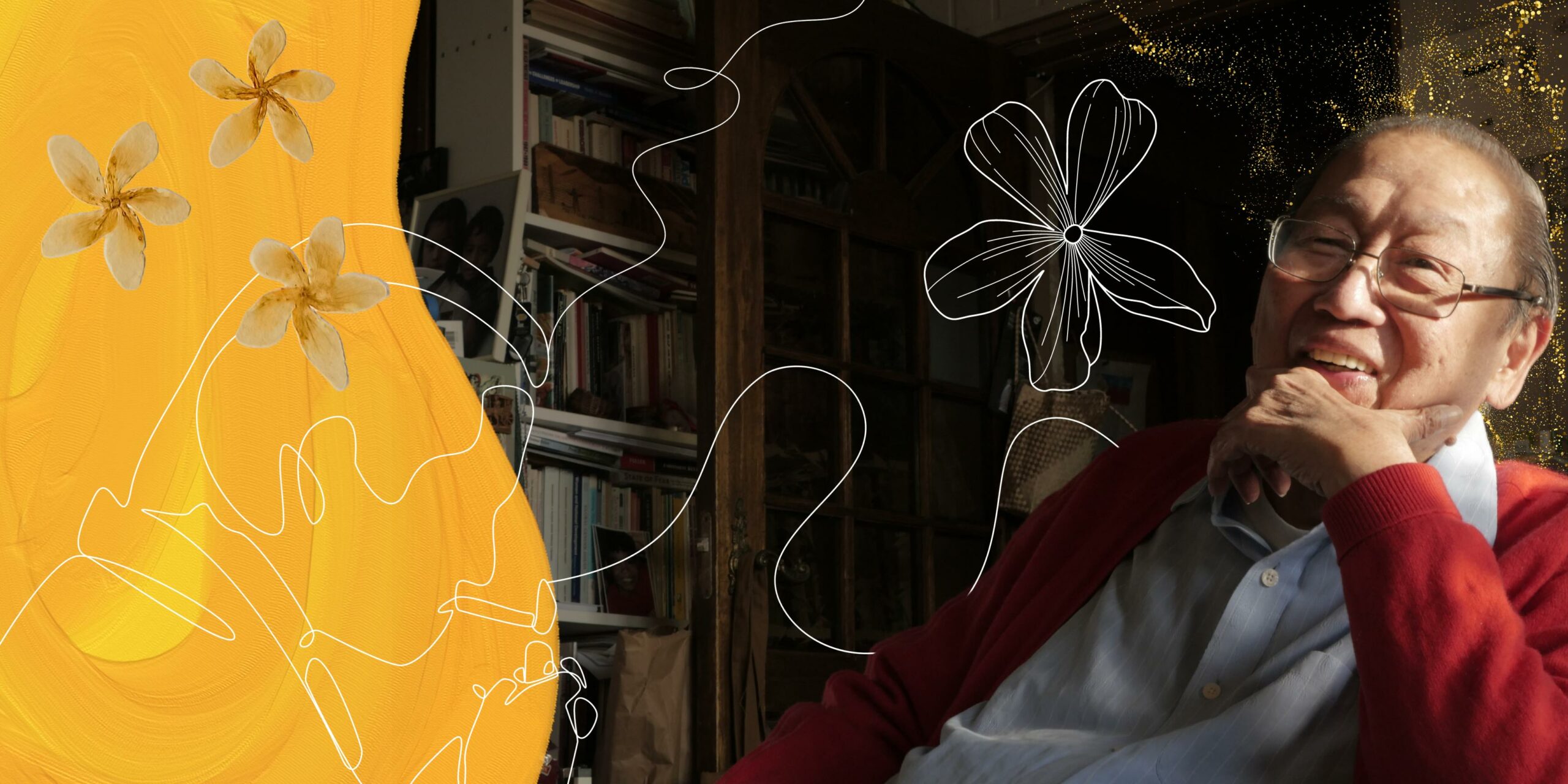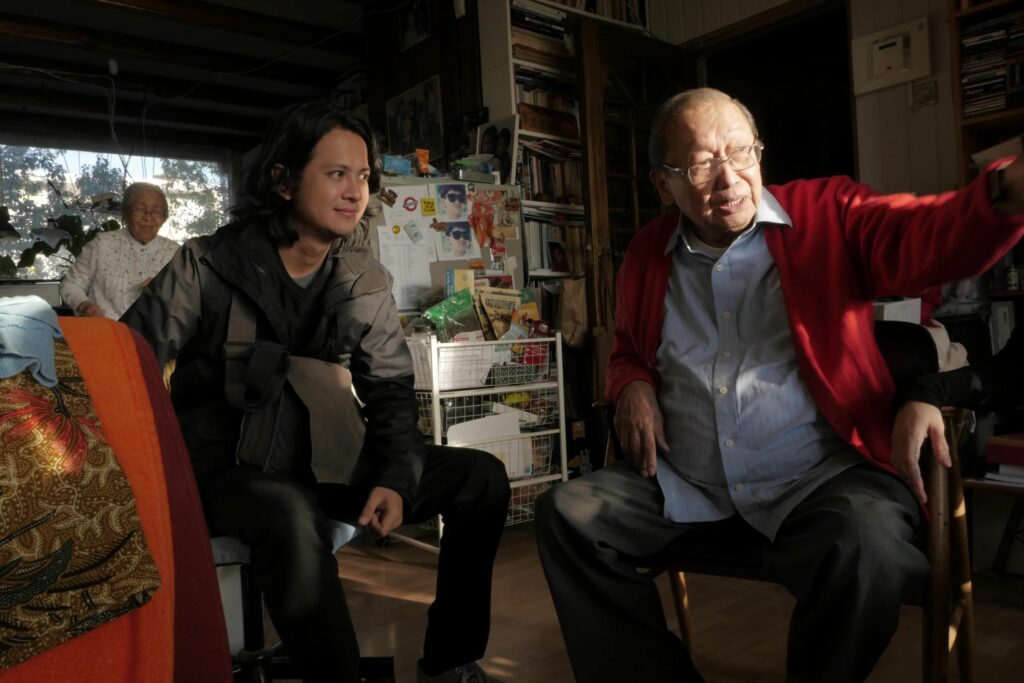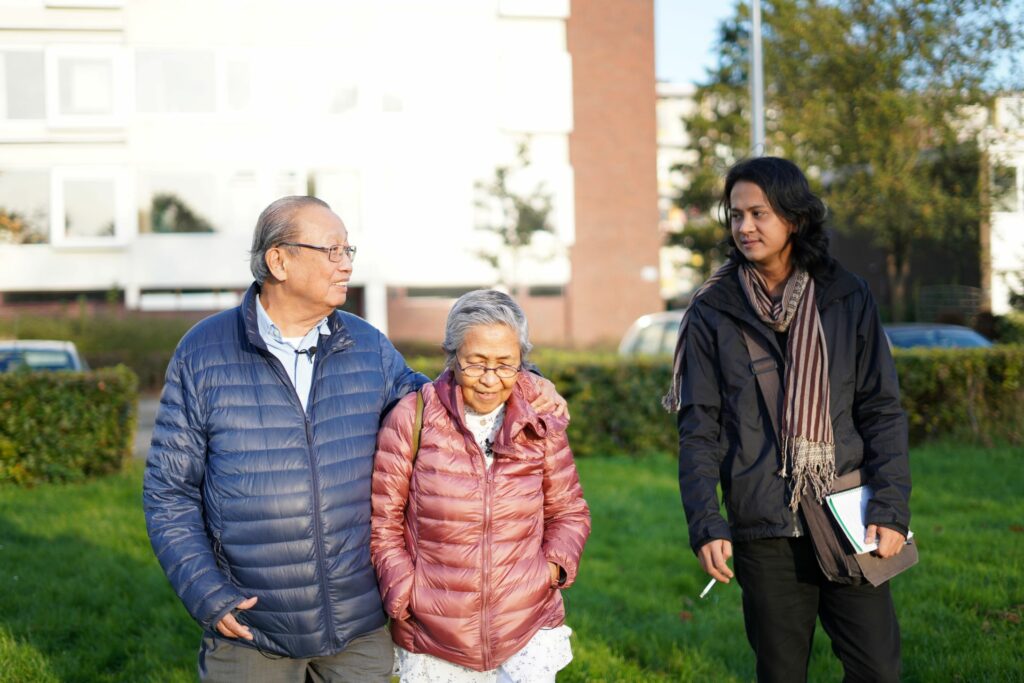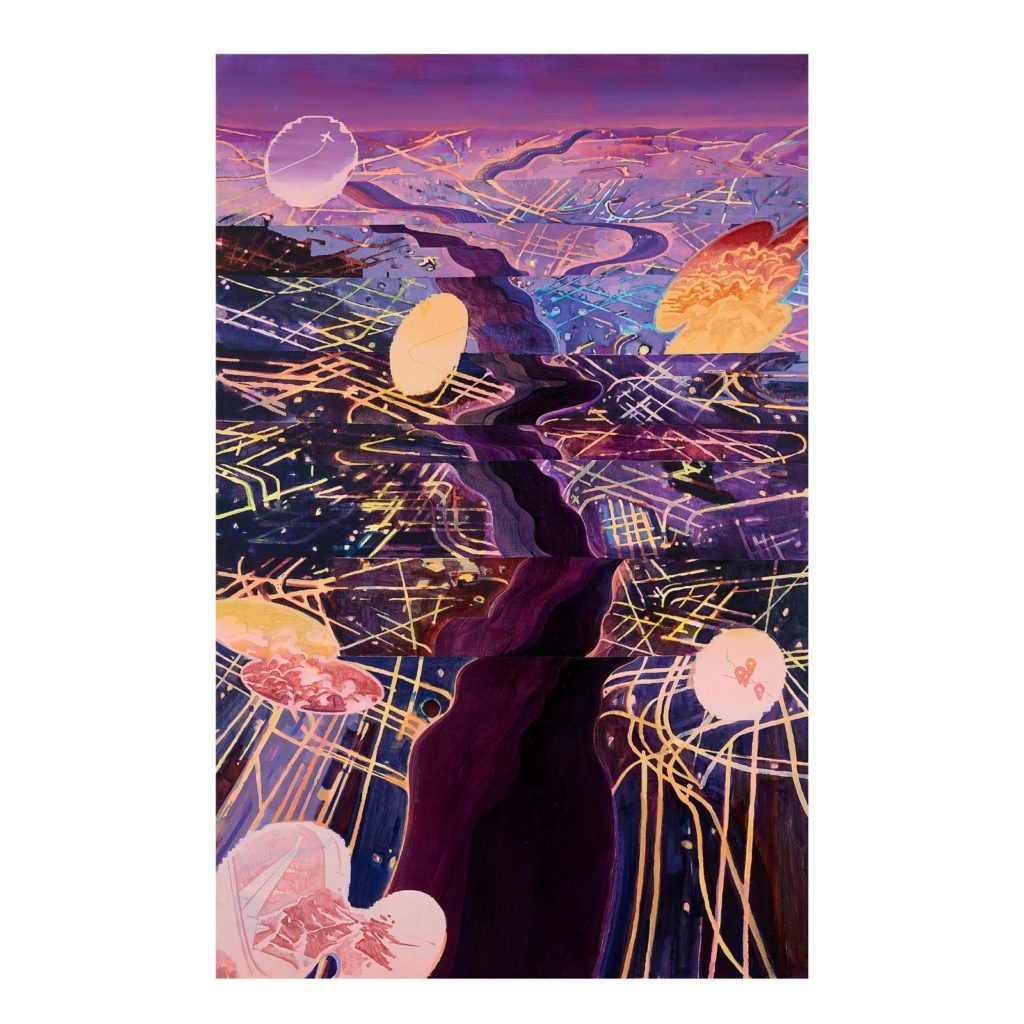On Joma Sison and Julie de Lima, the Philippines’ most famous leftist couple

December 15, 2023
The following is an excerpt from The Singing Detainee and the Librarian with One Book: Essays on Exile (Ateneo de Manila University Press, 2023), reprinted with the permission of the author, Michael Beltran.
Author’s Note
In June 2019, I pitched the idea of publishing an in-depth article about his life in exile to none other than the exiled Filipino revolutionary leader Jose Maria Sison, or Joma, as he’s widely known. I had interviewed him several times before, and I felt we had developed a level of rapport common between journalists and their usual sources. At the time, he was ever-present in the news, releasing statements and trading barbs with then-President Rodrigo Duterte. Joma is well-known as the founder of the Communist Party of the Philippines (CPP) and the New People’s Army (NPA), arguably the government’s greatest adversaries. In 1987, while on a lecture tour in the Netherlands, the government revoked his and his companions’ Philippine passports, forcing them into exile. Joma was formally granted asylum by the Dutch government in 1995.
So I sent Joma a message, and he responded via email later that day, a lot sooner than I expected. His answer got me off my seat. I went outside to smoke a cigarette, my thoughts racing.
Joma proposed I write a book instead of an article. I had never written a full book manuscript before, nor had I even remotely considered it. But now that the suggestion was on the table, how could I say no? The offer was too enticing. Thinking it over, I was overwhelmed by the sheer number of ways I could approach the subject of a man who had been making headlines for over half a century. Even with all the preexisting literature on him and the revolutionary movement, there was still a lot of story to be told.
I also had other reasons for pursuing this project. I was raised by a single mother who spent seven years as an NPA guerrilla and many more years as a women’s rights activist. I grew up emotionally connected to the revolutionary movement, and with a deep affection for it. Its martyrs became my bedtime stories; its hymns were my lullabies; its history, my after-school lessons. My mother’s friends always told me the most fascinating tales of champions in upheavals, of loss, and of isolation. Because of the tyrannical times we live in, I thought maybe a few more stories like these could serve us well.
Joma’s ideas and actions have been a constant feature of Philippine politics for most of the postwar period, but he didn’t attain that prominence by himself. There was bound to be a web of other stories and people tied to him, all beneath the surface of the public narrative. There was so much ground to cover. No portrait of Jose Ma. Sison can be complete without including his wife and partner, Julie de Lima, who is as comfortable behind the scenes as her husband is in the spotlight.
Joma and Julie are two of the most important figures in Filipino contemporary history. On the one hand, they are heroes to Filipino revolutionaries back home and beacons of international solidarity in the global communist movement. On the other hand, they’re also considered villains by a host of governments, reactionaries, ex-communists, and all manner of paper tigers. This dichotomy—celebrated and vilified for the majority of their lives—was worth investigating.
I was nervous about my pitch. To fill an entire book, I wanted to study their lives in exile, what led to it, and I also wanted to interview the people who witnessed and experienced exile with the couple. I wasn’t sure if this was enough to satisfy any group of readers.

Throughout the project, the couple agreed to surrender creative control to me. I thought they might reconsider, given the amount of polarization surrounding them, but they were pretty casual about the whole affair. We also decided that documentation in preparation for writing the book would have to take place in the Netherlands, where Joma, Julie, and the rest of the National Democratic Front of the Philippines (NDFP) staff agreed to meet with me for a series of interviews. I had the intimidating task of traveling a continent away to try and sift through a lifetime of experience and find new stories to tell.
This project is not and was never intended to be a comprehensive report on the Philippine left, or on Joma and Julie. I doubt such a task could be done in a single book. My contribution is just another addition to the large body of work about the revolutionary movement in the Philippines and its leaders.
In December 2022, I welcomed a trip back to the Netherlands to work on a different project. I planned to stop by Joma’s house and talk again like we did three years ago. I sent him an email in advance declaring there would be mangoes when I arrive. The only reply I received was about funeral preparations.
Strangely, I thought I’d never see the passing of Joma in my lifetime. It was hard to imagine a time that wasn’t punctuated by his thoughts or shaped by actions he and many others had taken. Hard to imagine how a man who shaped our national history could succumb to mortal limitations.
The loss hurt many—myself included. It was like learning that a character from your favorite story had suddenly stopped his adventures, and no more new tales would be told.
As he lay in great pain for weeks on his hospital bed, he issued his last statement, proclaiming the revolution to be “invincible.” I felt it was Joma saying that death would not be his or the revolution’s undoing. That for many, if not all, the pursuit was enough for others to carry on. The body suffers terribly. The struggle prevails.
I sought the good and the true about the revolution throughout the nearly three years I spent working on this book. Indeed, Joma lives on and our talks ring clear in my memory.
Introduction

I could have stayed out there forever. It was an early autumn afternoon in Utrecht. The wind scraped me with a skin-piercing chill. In a few days, November would usher in the height of the year’s gloom, the dreary period after the previous months’ warmer, milder weather and before the December festivities. I stood at the doorstep of the office of the National Democratic Front of the Philippines (NDFP), and a terrifying anticipation washed over me. I couldn’t bring myself to ring the doorbell. I had arrived at my destination with a severely incomplete idea of what I intended to write. The subjects at hand were about to surrender the details of their lives for my book, yet here I was, outside on the Utrecht sidewalk, still wondering what to do. An old friend, Kim, had just picked me up at Schiphol Airport in Amsterdam. We caught up with each other’s lives on the train ride to Utrecht Central Station. I stared at some of her new tattoos, including one underneath her bleach blonde and violet bangs that read “sa digma sisilang ang payapa (from war, peace will be born).” But my lively friend implored me to focus as she suggested people that I should meet for the project. From the station, we disembarked for a five-minute walk to the office. I wasn’t used to the biting cold. It wasn’t just the weather, I was also frozen by thoughts of the task at hand.
Through the window blinds of the NDFP, I saw a glimpse of an old man in a threadbare red cardigan seated at a table, deep in discussion with several others. Beside me, Kim had her hands on her hips, her eyebrows cocked and waiting for me to do something. I asked her if we could delay entering. I needed a few minutes to take it all in—what I was about to do and whether I would be able to pull it off. She said I worry too much. She’s right.
The people inside the office were expecting us. We rang the doorbell, stepped inside, and disrupted an ongoing meeting with our exchange of introductions and pleasantries.
“Uy, si Michael (Hey, it’s Michael).” Jose Maria Sison, or Joma as he was called, stood to greet me.
I attempted a wave, but my hand was left hanging in the air like I was about to answer a question in class. I managed to pull off a crooked smile. Kim noticed my whole body stiffen so she dragged me closer to them.
I sat between Joma and his wife, Julie de Lima. We agreed to conduct most of the interviews at the couple’s home, but there in the office Joma already appeared excited, gushing at the prospect of storytelling. I mentioned my family’s hometown in Pangasinan. He responded by digging into some internal archive. He named several mayors of my ancestral town and noted the variety of languages therein. Then he traced my lineage back to Spanish colonial times, correctly naming my great-grandparents. I had never met anyone who could do that. It’s like a party trick. I was impressed and began to feel somewhat at ease.
Julie let Joma do most of the talking. At 4:00 p.m. she rose to fetch her lunch. She barely looked up from her small cup of food, but muttered corrections to Joma whenever he misremembered a detail or lagged behind in the conversation, because he could not hear well even when he wore his hearing aid.
A few days after my arrival, I biked to Joma and Julie’s private residence, or as the Philippine government has alluded to in their attempts to malign the couple, their “luxurious European mansion.” Kim joined me to help take pictures of the couple for this book. I carried my notebook, filled with out-of-sequence questions. Luckily, this trip provided plenty of insight to shape the entire text. So much of Joma and Julie’s life is tied to their Dutch dwelling.
Inside the apartment, Joma settled down into the faded upholstery of his favorite chair. The afternoon sunlight slanted into the room and bounced off his glasses whenever he looked at the window. His attention was caught by the sight of a passing barge on the Amsterdam–Rhine Canal, the only visible outdoor attraction.
Good conversation is one of Joma’s greatest pleasures in life. If you had an assortment of random topics in a hat, he’d be happy to discuss any of them at length. “Naikwento ko na ba ito? (Have I told you this?)” he often began, leaning in and committing his entire attention to the exchange. As soon as we sat, he started answering questions I hadn’t even asked.
He described the neighborhood we were in and how it turned noisy without warning. On some nights, gunshots and local scuffles roused them from their sleep.
Julie sat in front of her computer. At one point during the nineties, she enjoyed photography with her vintage camera. The hobby ended when a man snatched her camera while she was taking pictures around the block. When I asked to see pictures, they suggested going on a short neighborhood tour instead.

We made our way down the stretch of road on the banks of the Amsterdam–Rhine Canal to climb the Prins Clausbrug Bridge at the edge of the neighborhood. A verbal high gripped Joma. On the way back, although panting from exertion, he insisted on continuing the conversation between every labored breath.
Joma’s lust for life and conversation struck me as something instinctive; an attempt to bypass, even rebel against, his own physical containment.
The sky had darkened by the time we returned to their house. Julie rushed to her workstation, her face illuminated by three lit monitor screens and a desk lamp. She gave Kim instructions about another task. Joma returned to his chair, rapped on its armrest with his fingers, and started to hum.
Later that evening—notebook in hand, spare change in one pocket, cigarettes in the other, and a dysfunctional laptop open in front of me—I sat on my bed inside my quarters at the NDFP office and tried to invoke some conviction for this book. I didn’t know where to go in this huge sandbox. There’s so much room for error. But the first few days of meeting the NDFP folks and the Filipino community had led to some key impressions. I went out for a cigarette. It felt like the deep breath I had needed since my plane landed.
The experience of one exile was wildly different from the next. Dealing with separation from the Philippines was a herculean task or burden, depending on who you ask. But they all had to rely on each other. They are all, after all, Filipino revolutionaries fighting to liberate a homeland they cannot set foot on.
I had also come upon an unexpected variable: the way Filipino migrant workers and refugees permeated every dialogue. Filipino communities have sprung up throughout the world, pulling their compatriots into orbit, and Joma, Julie, and the NDFP were no different.
For approximately the next two months, I spent almost every day gathering data and conducting interviews. I hopped on trains, buses, trams, and bikes or walked to interviews I had booked on the fly. I spoke to migrants, communists, and opponents of the people’s movement, among others, who were added to the developing cast of characters in this book.
Along the way, I picked up quite a few surprising details, sources, and angles that would shape the entire book. I didn’t know it at the beginning, but my own fears of banishment and my homesickness were much greater than my initial anxieties. Predictably, these same fears helped guide and connect everything in these pages. What started out initially as a human-interest piece on the famous couple’s current life grew into a collection of portraits examining exile.


